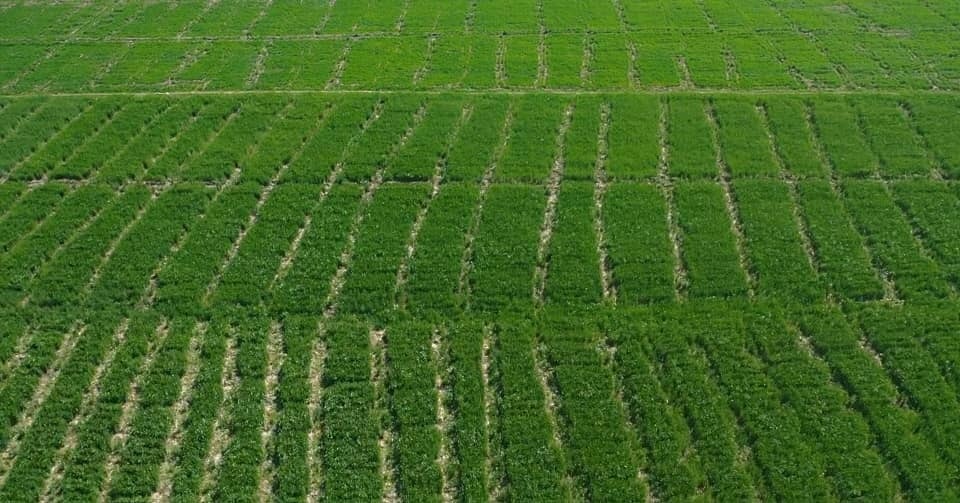
Ethiopia's Agricultural Transformation: A Model for Food Sovereignty in Africa
Ethiopia has made remarkable strides in ensuring its food sovereignty over the past seven years, positioning itself as a leader in Sub-Saharan Africa. This achievement has not only strengthened its domestic food security but also earned it the honor of hosting the Second UN Food Systems Summit Stocktake (UNFSS+4) in Addis Ababa from July 27 to 29, 2025. The country’s journey toward agricultural self-sufficiency is a story of innovation, policy reform, and collective effort.
A Bold Policy Shift
Ethiopia’s transformation began with a strategic shift in its agricultural policies. The government introduced bold programs aimed at boosting productivity and reducing reliance on food imports. One of the most notable initiatives was the cluster wheat farming approach, which involved irrigation and the use of high-yield seed varieties. This initiative has revolutionized wheat cultivation, turning Ethiopia from a wheat-importing nation into a self-sufficient and exporting one.
Between 2019 and 2025, Ethiopia not only closed its wheat import gap but also became a net exporter. This success was driven by a combination of infrastructure development, participatory governance, climate-resilient agriculture, and consistent policy support. The Homegrown Economic Reform Agenda, launched in 2019, emphasized agriculture as the backbone of the economy, recognizing its role in employment and economic growth.
Record Wheat Production
The Ministry of Agriculture reported that during the 2016/17 Ethiopian crop year, Ethiopia harvested an impressive 290 million quintals of wheat through extensive winter and summer irrigation. This figure highlights the nation’s commitment to increasing domestic production and reducing dependence on imports. According to Minister Girma Amente, this achievement reflects Ethiopia’s strategy to replace imported goods with locally produced alternatives.
In the 2025 crop season, Ethiopia cultivated 3.5 million hectares of land, yielding 140 million quintals of wheat. By 2024, the country had irrigated 2.9 million hectares across regions such as Afar, Oromia, and Amhara. These irrigation schemes have allowed farmers to grow crops year-round, mitigating the risks associated with seasonal fluctuations.
Innovation and International Collaboration
To further enhance agricultural productivity, Ethiopia has collaborated with international research institutions to develop high-yielding, disease-resistant wheat varieties suitable for different agro-ecological zones. Mechanized agriculture has also seen significant improvements, contributing to increased efficiency and output.
In addition to these efforts, Ethiopia is actively developing climate-resilient agriculture. Environment-friendly policies include duty-free importation of over 400 types of farm machinery, which reduces costs for farmers. Techniques such as drip and sprinkler irrigation, conservation tillage, composting, agroforestry, and mixed crop-livestock systems are being adopted to conserve water and boost yields, especially in drought-prone areas.
National Initiatives and Digital Technology
Two key national initiatives, "Ye Lemat Turufat" (Bounty of the Basket) and the "Green Legacy Initiative," are central to Ethiopia’s food sovereignty goals. These programs aim to increase food production, promote afforestation, and ensure conservation. Diversification of farm production, with a focus on high-value crops like fruits, vegetables, pulses, and oilseeds, has improved household income and nutrition.
Digital technology has also played a crucial role in supporting farmers. Ethiopia rolled out its National Agricultural Digitalization Strategy by 2024, introducing mobile advisory services, smart input distribution systems, and real-time weather and pest alerts. These innovations have enabled precision agriculture, particularly in arid regions like Somali and Afar.
Cooperative Strategies and Institutional Reforms
Cluster farming and cooperative strategies have been instrumental in achieving economies of scale, improving access to markets, and enhancing coordination among smallholder farmers. A ten-year agricultural development strategy, along with institutional reforms and policy support, has reinforced the transformation. Land use reforms, expanded rural finance, and improved extension services have all contributed to the continuity and structural alignment of Ethiopia’s agricultural efforts.
Natural Resources and Agricultural Potential
Ethiopia’s vast natural resources, including extensive arable land, favorable climate, and abundant water resources, provide a strong foundation for its self-reliance targets. The country can cultivate a wide range of crops, from staple cereals like teff, maize, wheat, and sorghum to export crops such as coffee, legumes, and oilseeds. It also has significant potential for meat and dairy production, as well as leather products.
Millions of smallholder farmers form the backbone of Ethiopia’s food security, playing a critical role in the country’s agricultural success.
A Comprehensive Transformation
What sets Ethiopia’s agricultural revolution apart is not just the volume of output, but the depth and breadth of change across the entire system. Leadership, innovation, and broad participation have driven this transformation. Minister Girma Amente described the reforms as having “changed the complexion of agriculture by increasing mechanization, promoting cluster farming, and opening opportunities for year-round cultivation.”
Ethiopia’s agrarian leap serves as a model for food self-sufficiency in Africa. Its transition from a nation grappling with food insecurity to a leader in agricultural self-sufficiency showcases the power of visionary leadership and collective effort. Through integrated approaches that emphasize climate-resilient agriculture, farmer-centric policies, and institutional reforms, Ethiopia is poised to champion a compelling model for sustainable food sovereignty in Africa and beyond.


Posting Komentar